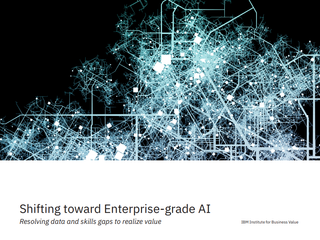Microsoft AI can detect security flaws with 99% accuracy
Developers can use the mechanism to establish whether bugs are security-related and assign a severity rating

Microsoft has released an artificial intelligence (AI)-powered tool to help developers categorise bugs and features that need to be addressed in forthcoming releases.
The software giant’s machine learning system classifies bugs as security or non-security with a 99% accuracy, and also determines whether a bug is critical or non-critical with a 97% accuracy rating.
With ambitions to build a system with a level of accuracy as close as possible to a security expert, Microsoft fed its machine learning model with bugs labelled as security and non-security. Once this was trained, it could then label data that was not pre-classified.
“Every day, software developers stare down a long list of features and bugs that need to be addressed,” said Microsoft’s senior security program manager Scott Christiansen, and data and applied scientist Mayana Pereira.
“Security professionals try to help by using automated tools to prioritize security bugs, but too often, engineers waste time on false positives or miss a critical security vulnerability that has been misclassified.
“At Microsoft, 47,000 developers generate nearly 30 thousand bugs a month. These items get stored across over 100 AzureDevOps and GitHub repositories. To better label and prioritize bugs at that scale, we couldn’t just apply more people to the problem. However, large volumes of semi-curated data are perfect for machine learning.”
Because the system needs to be as accurate as a security expert, security professionals approved training data before this was fed into the machine learning model. Once the model was operational, they were brought back to evaluate the model in production.
Get the ITPro. daily newsletter
Receive our latest news, industry updates, featured resources and more. Sign up today to receive our FREE report on AI cyber crime & security - newly updated for 2024.
The project began with data science and the collection of all data types and sources to evaluate quality. Security experts were then brought in to review the data and confirm the labels assigned were correct.
Data scientists then chose a modelling technique, trained the model, and evaluated performance. Finally, security experts evaluated the model in production by monitoring the average number of bugs and manually reviewing a random sample.
The mechanism uses a step-step machine learning model operation; first learning how to classify between security and non-security bugs and then to apply a severity rating.
As a result of the level of accuracy, Microsoft now believes it’s catching more security vulnerabilities before they are exploited in the wild.
Development teams can read details in a published academic paper, with the machine learning methodology set to be open-sourced through GitHub in the coming months.

Keumars Afifi-Sabet is a writer and editor that specialises in public sector, cyber security, and cloud computing. He first joined ITPro as a staff writer in April 2018 and eventually became its Features Editor. Although a regular contributor to other tech sites in the past, these days you will find Keumars on LiveScience, where he runs its Technology section.





